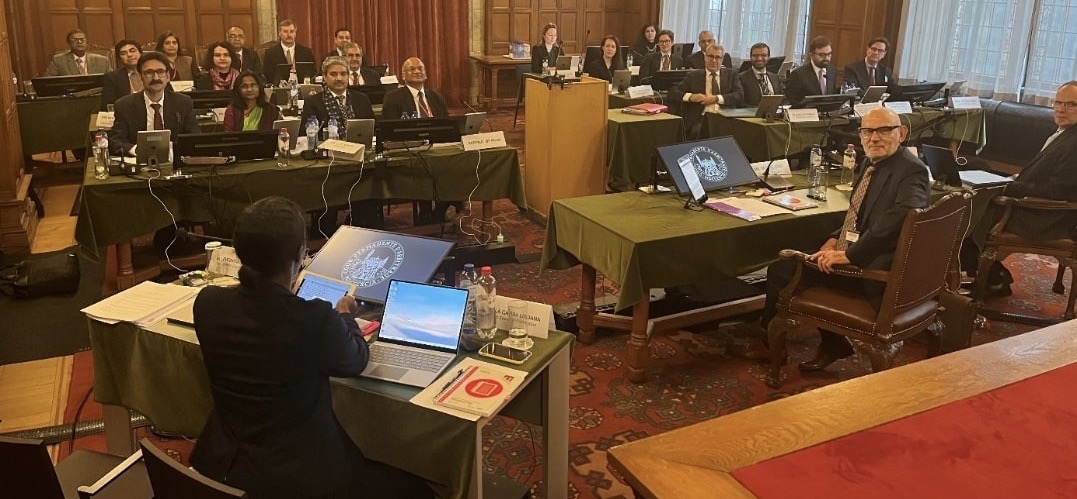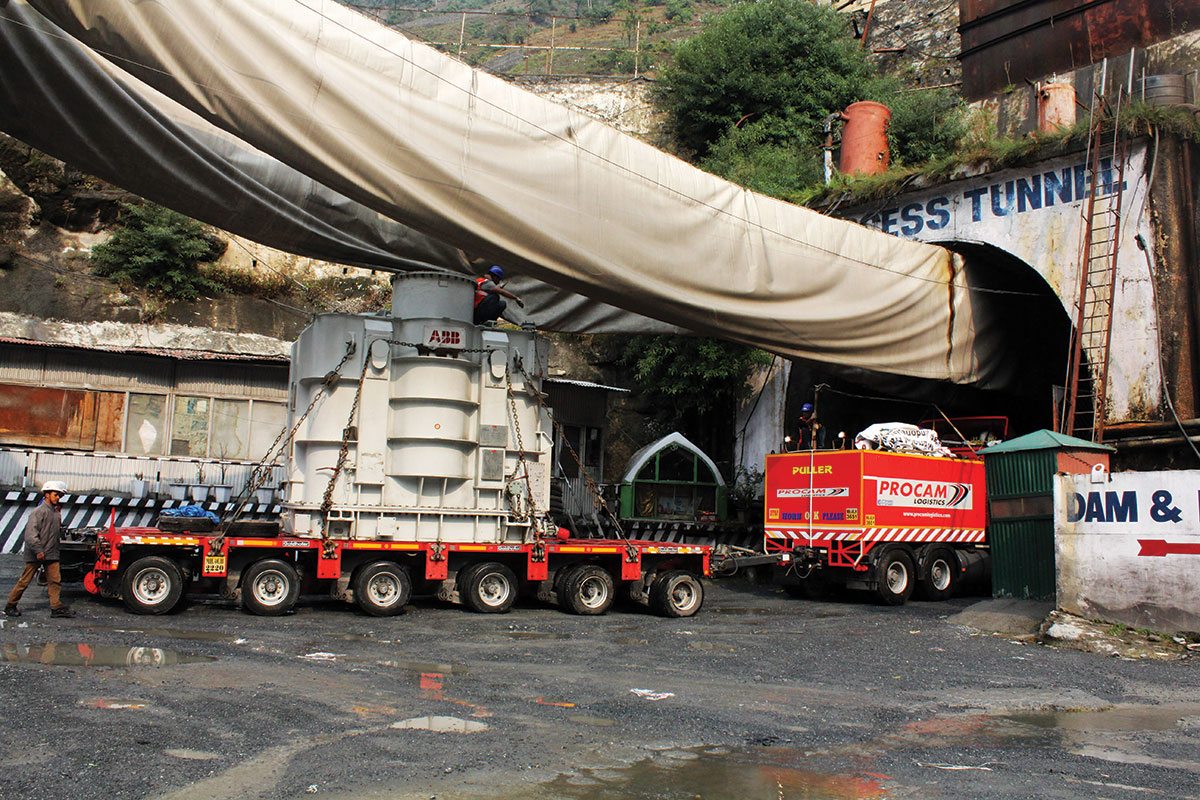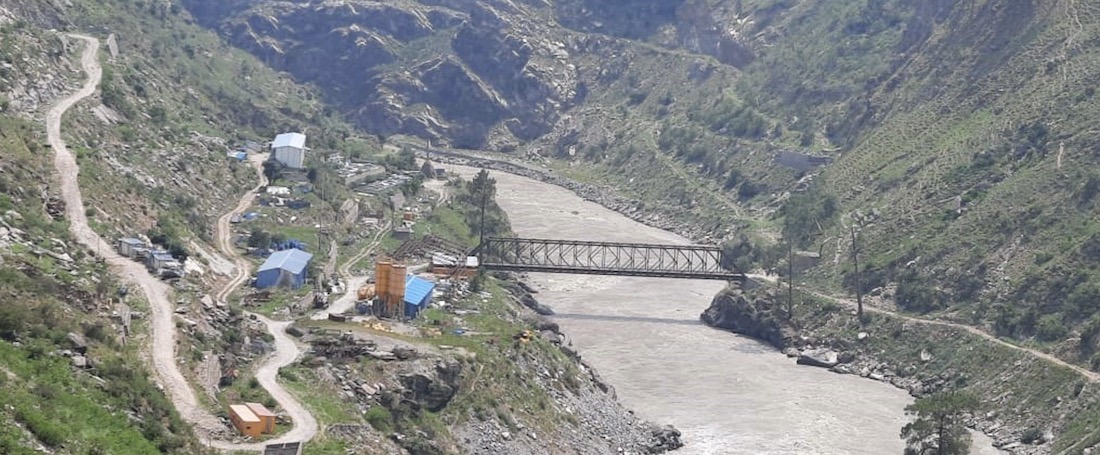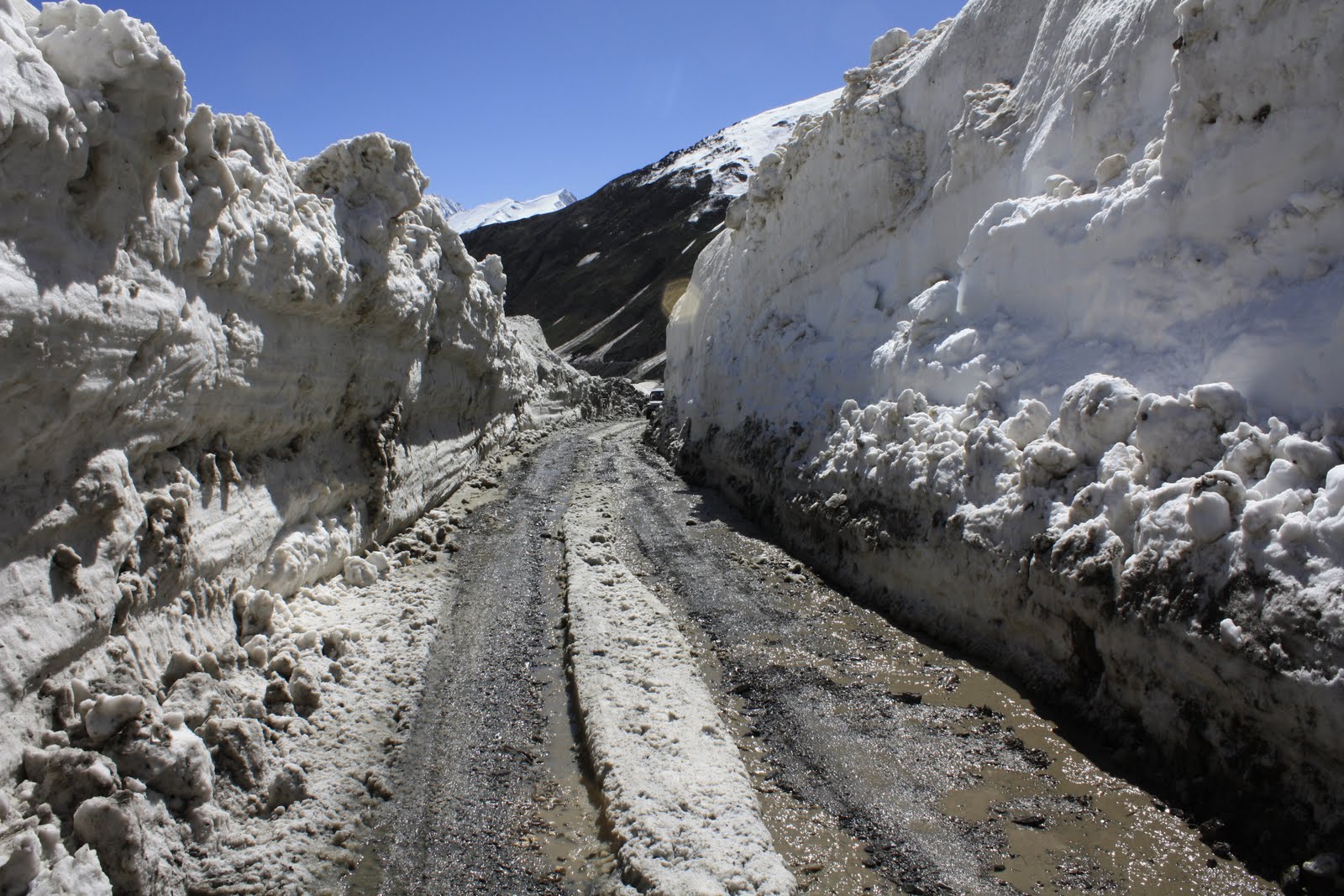by Masood Hussain
SRINAGAR: The Jammu and Kashmir government is busy in preparations to host a huge delegation of the World Bank-appointed Neutral Expert, Michel Lino, and his team will have a group of Pakistani engineers as well. The team will be in Jammu and Kashmir for almost ten days starting June 17.

The administration has put the services of 25 JKAS officers at the disposal of the Jammu and Kashmir Power Development Corporation (JKPDC) which is the nodal institution for hosting the delegation. These officers will operate as the liaison officers of the Experts secretariat and the members – mostly engineers – from India and Pakistan.
The visit is part of the dispute resolution mechanism under the water-sharing Indus Water Treaty (IWT). The dispute resolution was initiated by India and Pakistan is the respondent in the case.
There is no official word about the details of the visit. However, the Neutral Expert has been appointed by the Bank on India’s request to decide the “differences” that India and Pakistan have over two hydroelectric projects in Jammu and Kashmir – the operational 330-MW Kishanganga in Gurez and the upcoming 850-MW Ratle project in Chenab Valley. While Kishanganga is wholly owned by the NHPC, India’s hydropower giant, it, however, controls only 51 per cent of the Ratle as the Joint Venture gives JKSPDC a 49 per cent stake.
Treaty Dispute Resolution
Construction of any major irrigation or power project on the three rivers in Jammu and Kashmir is guided by the 1960s-signed, World Bank brokered water sharing Indus Water Treaty. To stay in touch with each other India and Pakistan have Permanent Indus Commissions in operation as part of the agreement. They share details of the projects the two countries start, discuss them and finalise them. However, the two sides are always not on the same terms. They disagree on designs more often.
Almost all major power projects in Jammu and Kashmir have passed through the IWT-guided dispute resolution mechanisms. There were structural changes in Baglihar. In Kishanganga, Pakistani felt dissatisfied with the Neutral Expert award.
The Treaty has an interesting system of dispute resolution. In project contexts, PICs (Permanent Indus Commission) pose questions to one another. Under the Treaty, a ‘question’ represents the initial stage of dispute resolution intended to be handled bilaterally. If a ‘question’ is not resolved, it escalates to a ‘difference,’ allowing the parties to seek intervention from the World Bank, which then appoints a Neutral Expert (NE). Should either party find the NE’s decision unsatisfactory, the matter becomes a dispute that is ultimately settled by a Court of Arbitration (CoA). Typically, the NE addresses technical issues, while legal issues are handled by the Court.

Usually, it is Pakistan that has petitioned the World Bank on the upcoming power projects in Jammu and Kashmir for most of the last more than half a century. This case, however, was interesting. Both India and Pakistan went to the World Bank initially seeking a Neutral Expert. In quick follow-up, however, Pakistan wants CoA and India as Neutral Expert. World Bank slept over the issue for some time but later obliged both. It appointed Michel Lino as a Neutral Expert in Vienna and set up a 5-member CoA at The Hague under Prof Sean D Murphy in October 2022. Interestingly, Pakistan appears in both the forums but India has boycotted the COA but is firmly associated with the Neutral Expert.
Delhi Case
The Government of India has sent a detailed case to the World Bank based on which the Neutral Expert was appointed. Here follows the detailed communication based on which the World Bank acted.
“Based on the correspondences and the discussions held in Permanent Indus Commission, the following points of difference have arisen:
KISHENGANGA HYDROELECTRIC PLANT
I. India is of the considered view that the pondage of 7.55 million cubic metre (MCM) provided in the design is within the limits of the maximum pondage permitted in accordance with paragraph 8(c) of Annexure D and does not exceed twice the pondage required for Firm Power. The pondage provided by India is also in accordance with paragraph 2(c) of Annexure D i.e. Live Storage of only sufficient magnitude to mect fluctuations in the discharge of the turbines arising from variations in the daily and the weekly loads of the plant. The pondage provided by India meets the operational restriction imposed by Paragraph 15 of Annexure D.
India is also of the view that the intakes for the turbines are located at the highest level consistent with satisfactory and economical construction and operation of the Plant in accordance with Paragraph & (1) ot Annexure D
Pakistan side does not agree with India’s position.
II. India is of the considered view that outlets below the Dead Storage Level provided in the design of the Plant are in accordance with Paragraph 8(d) of Annexure D to the Treaty, and are of minimum size and located at the highest level. The proposed spillway configuration to pass the design discharge of 2000 cumec and also for sediment sluicing is the optimal configuration within the topographical constraints.
Pakistan side does not agree with India’s position.
iii. India is of the considered view that the design of the Plant conforms to the design criterion specified in Paragraph 8 (e) of Annexure D to the Treaty as the conditions at the site of the Plant make it necessary to provide a gated spillway. Moreover, the bottom level of the gates in normal closed position is all the highest level consistent with sound and economical design and satisfactory construction and operation of the works.
Pakistan side does not agree with India’s position.

RATLE HYDROELECTRIC PLANT
I. India is of the considered view that 2 meters freeboard provided in the design of the Plant is in accordance with Paragraph 8(a) of Annexure D and does not make the works themselves capable of raising artificially the water level in the Operating Pool above the Full Pondage Level (FPI.) specified
Pakistan side does not agree with India’s position.
II. India is of the considered view that the pondage of 23.86 million cubic metre (MCM) provided in the design is within the limits of the maximum pondage permitted in accordance with paragraph 2(c) of Annexure D of the Treaty i.e. Live Storage of only sufficient magnitude to meet fluctuations in the discharge of the turbines arising from variations in the daily and the weekly loads of the plant. The pondage provided by India meets the operational restriction imposed by Paragraph 15 of Annexure D.
India is also of the view that the intakes for the turbines are located at the highest level consistent with satisfactory and economical construction and operation of the Plant in accordance with Paragraph 8 (f) of Annexure D.
Pakistan side does not agree with India’s position.
III. India is of the considered view that outlets below the Dead Storage Level provided in the design of the Plant are in accordance with Paragraph 8(d) of Annexure D to the Treaty, and are of minimum size and located at the highest level. The proposed spillway configuration to pass the design discharge of 13814 cumce and also for sediment sluicing is the optimal configuration within the topographical constraints of the site.
Pakistan side does not agree with India s position.
IV. India is of the considered view that the design of the Plant conforms to the design criterion specified in Paragraph 8 (e) of Annexure D to the Treaty as the conditions at the site of the Plant make it necessary to provide a gated spillway. Moreover, the bottom level of the gates in normal closed position is at the highest level consistent with sound and economical design and satisfactory construction and operation of the works
Pakistan side does not agree with India’s position.”
The issues justified by the Government of India are the points of differences with Pakistan. It is this issue that the Neutral Expert is mandated to decide. Before an award, the Expert will hear both sides and visit the site and later reach a conclusion. It is sort of a technical court.

The Last Meeting
The last meeting that Neutral Expert held was in September 2023. Here is the detailed press release that his office issued from Vienna on November 8, 2023:
“On 20 and 21 September 2023, Mr. Michel Lino, the Neutral Expert appointed under the Indus Waters Treaty 1960, held a second meeting with the Parties in proceedings commenced by the Republic of India against the Islamic Republic of Pakistan concerning India’s Ratle and Kishenganga Hydroelectric Plants.
The proceedings are administered by the Vienna Office of the PCA, in cooperation with its Mauritius Office, and the meeting was held at the Hofburg Palace in Vienna. Matters discussed in the meeting included the organization of a site visit, questions arising from India’s Memorial, which was submitted on 31 August 2023, and amendments to the Work Programme for the proceedings.
India was represented in these discussions by its Designated Representative, Shri Pankaj Kumar, then Secretary, Department of Water Resources, River Development and Ganga Rejuvenation, Ministry of Jal Shaki; by Mr. Kushvinder Vohra, Mr. S. K. Sibal, Mr. Narendra Singh Shekhawat, and Ms. M. S. Harshitha (Harshita Harris) of the Central Water Commission (CWC); by Ms. Uma Shekhar, Mr. J. P. Singh, Ms. Gitanjali Brandon, and Dr. Kumar Abhijeet of the Ministry of External Affairs; by India’s Commissioner for Indus Waters, Mr. A. K. Pal; by the Senior Joint Commissioner for Indus Waters, Mr. Naveen Kumar; by Mr. Vishal Kumar Saini and Mr. Arunesh Bihari Dwivedi of the National Hydroelectric Power Corporation (NHPC); by Prof. G.R. Basson and Prof. Dr. Anton J. Schleiss, as technical experts; and by Mr. Harish Salve KC, Mr. Ankur Talwar, and Mr. Anandh Venkatramani, as counsel.
Pakistan was represented by its Designated Representative, H.E. Mr. Ahmad Irfan Aslam, Minister of Law & Justice, Water Resources and Climate Change; by the Attorney General, H.E. Mr. Mansoor Awan; by the Secretary, Ministry of Water Resources, Mr. Ali Murtaza; by the Director General (South Asia) of the Ministry of Foreign Affairs, Mr. Ilyas Mehmood Nizami; by its Ambassador to the Republic of Austria, H.E. Mr. Aftab Ahmad Khokher; by its Indus Waters Commissioner, Mr. Syed Muhammad Mehar Ali Shah; by the General Manager of the National Engineering Services Pakistan (NESPAK), Mr. Khalid Mahmood; by Ms. Leena Nishtar of the Office of the Attorney General; by Dr. Gregory L. Morris and Mr. Peter J. Rae, as technical advisors; and by Sir Daniel Bethlehem KC, Mr. Sean Brannigan KC, Dr. Cameron Miles, and Ms. Laura Rees-Evans, as counsel.
Following the meeting, amended Work Programmes were issued by the Neutral Expert on 11 October and 2 November 2023.
Background on the Proceedings
On 13 October 2022, the International Bank for Reconstruction and Development (the World Bank), pursuant to Article IX and Annexure F of the Indus Waters Treaty 1960, and after consultation with each of the Parties, appointed Mr. Michel Lino as Neutral Expert in these proceedings.
The Neutral Expert convened a first meeting with the Parties on 27 and 28 February 2023 at the headquarters of the PCA at the Peace Palace, in The Hague.
Following the first meeting, the Neutral Expert’s Terms of Retainer were fixed on 2 May 2023 upon their signature by the Neutral Expert on that date after their signature by the representatives of each Party. The Terms of Retainer also recorded the appointment of Mr. Luc Deroo as the Neutral Expert’s Technical Assistant. On 1 June 2023, following consultation with the Parties, the Neutral Expert issued Supplemental Rules of Procedure, including a Work Programme. The Work Programme was subsequently revised on 21 August 2023.”
On Delhi’s Request
In Delhi, the government stated on September 21, 2023, insisting the meeting was held at the request of the Government of India. Here is the statement:
“A delegation from India, led by Secretary, Department of Water Resources, attended a meeting of the Neutral Expert proceedings in the Kishenganga and Ratle matter at the Permanent Court of Arbitration in Vienna on 20 and 21 September 2023. Senior Advocate Shri Harish Salve KC was present in the capacity of India’s Lead Counsel in this matter.
The meeting was convened by the Neutral Expert appointed on India’s request under the aegis of the Indus Waters Treaty and was attended by representatives of India and Pakistan.
India’s participation in this meeting is in line with India’s consistent, principled stand that as per the graded mechanism provided for in the Indus Waters Treaty, the Neutral Expert proceedings are the only valid proceedings at this juncture.
It is for this reason that India has taken the Treaty-consistent decision to not participate in the parallel proceedings being conducted by an illegally constituted Court of Arbitration on the same set of issues pertaining to the Kishenganga and Ratle HEPs.
The Neutral Expert proceedings are on-going and expected to continue for some time. India is committed to engaging in a manner that supports the resolution of issues in accordance with the provisions of the Indus Waters Treaty.”
The Site Visit
The Expert will now be flying to Jammu and Kashmir for an extended visit between the two parts of the state – Chenab Valley and Gurez. He will get presentations from the host engineers and the respondents will be present. Every bit of the visit is formally filmed and recorded meticulously and remains part of the records of the International Court of Arbitration of which the Neutral Expert is a part.
This will be followed by arguments by the two sides once the Neutral Expert resumes the proceedings later.
What happened to the Court of Arbitration (COA) which is operational and visited the Pakistani side last month is a different story. Interestingly the Neutral Expert and the COA are tackling the same set of “differences” between the two neighbours on Kashmir waters involving the two power projects.















